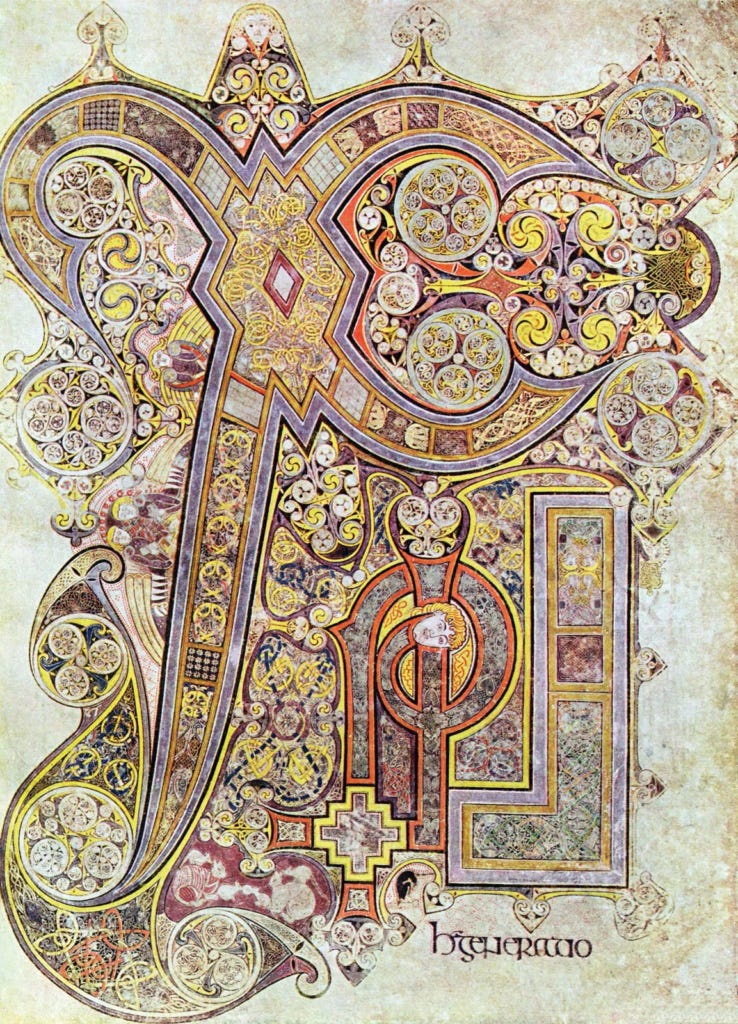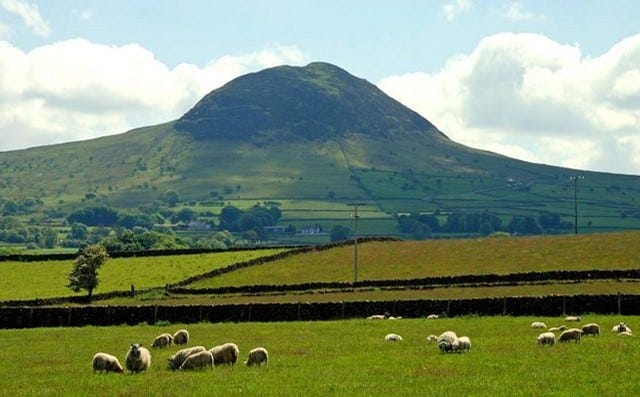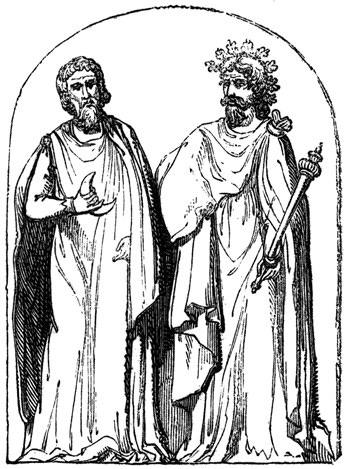Dear Classical Wisdom Reader,
Happy St. Patrick’s Day!
I’m writing to you from here in Ireland, where I’m sorry (but not surprised) to report it’s quite a wet day! Although it does remind me of a line from a song by the popular Irish rock band Bell X1: the grass is greener where it rains.
Nevertheless, it won’t dampen the spirit of everyone celebrating!
Amidst all of the excitement, I think many people forget that St. Patrick is a figure of the ancient world. He lived during the time of the Roman empire, and his legacy helped preserve some of the most important writings from ancient Greece and Rome.
Yet there’s more to St. Patrick’s story than this.
From being kidnapped by pirates as a teenager, to a dramatic escape from captivity, to being haunted by dreams about his ultimate destiny.
You can read all about it just below in today’s article, which separates the man from the myths… and finds the man just as compelling.
So wherever you are, and however you celebrate (or not), I hope you have a great one!
All the best,
Sean Kelly
Managing Editor
Classical Wisdom
St. Patrick: Patron Saint of Ireland
by Ed Whelan, Contributing Writer, Classical Wisdom
St Patrick’s Day is celebrated, often riotously, around the world and is popular among both Irish and non-Irish people. Yet many are unaware of the dramatic life of this Christian saint who was also a Roman citizen. Fewer still are aware of his importance not only for Irish history, but also broader European history.
The Early Life of St. Patrick
We know a great deal about the life of St. Patrick. His original name was Magonus Saccatus Patricius, and he was born in the 4th or 5th century AD in Roman Britain. His family was a member of the Romanized elite; his father may have been a decurion, or possibly a priest, and his mother was allegedly a niece of the Christian saint, Martin of Tours. Patrick was well-educated for his time, and there are two surviving Latin works attributed to him: the Confessio (Declaration) and the Letter to the Soldiers of Coroticus.
According to the Confessio, he was abducted by Irish pirates when he was 16. He was taken to Armagh, now in Northern Ireland, and was made to herd animals. For six years he lived alone in the valley and mountains, and suffered all kinds of deprivations and cruelties. In the wilderness his faith grew, and one night he heard a voice urging him to escape. He made his way to what is now Wexford, and persuaded a ship’s captain to take him back to Britain. Patrick eventually made his way back to his family, who were astonished that he survived his ordeal.
St. Patrick the Apostle
One night Patrick dreamt of a man he had known in Ireland by the name of Victoranius, who begged him to convert the Irish to Christianity. After some soul-searching, and despite his family’s opposition, Patrick moved to Gaul (now France). After years of study at Auxerre, he was ordained as a bishop.
Patrick returned to Ireland and landed in the south-east in 423 AD, but he was not welcomed. He moved north to where he had once been enslaved, and slowly began to gather followers. It should be noted that Patrick was not the first Christian missionary in Ireland, and that there were already Christians on the island. His style of preaching, however, made the teachings of Christ understandable to the ordinary people. In particular, he was able to reconcile the doctrine of the Trinity with the Celtic concept of a deity with a triple aspect. Patrick explained the complex theological concept of the Trinity (that the Father, Son, and Holy Spirit are separate entities yet also one) by using the three leaved shamrock. This is why today the shamrock is one of the national symbols of Ireland.
St. Patrick the Miracle Worker
Ireland’s traditional Celtic religion was entrenched in Irish society. Patrick was able to convert the Irish not only with his words, but with his deeds. Later sources in particular stress that Patrick was a miracle worker.
One of the most popular stories was that he expelled the snakes from Ireland. This is highly unlikely, and it may symbolically represent the expulsion of the pagans from the island. Many of his best-known miracles related to his contest with the Druids, the learned class who were the guardians of Celtic learning and religious practices. Patrick is shown as contending with the Druids several times at Tara, the stronghold of powerful kings, often regarded as the High-Kings of Ireland. In one account, a Druid tried to turn the king against Patrick. He simply prayed and had the man lifted into the air before he was cast down to his death. Another story relates that Patrick visited an unnamed town where he was confronted by Druids who would not allow him to enter. The bishop blessed the ground and the Druids disappeared under ground, never to be seen again. These tales of miraculous struggles with Druids should be understood to symbolically illustrate the contest between the old Celtic religion and the new religion for the allegiance of the Irish people.
Later years of St. Patrick
Patrick traveled all over the island of Ireland, and he founded many Churches and monasteries. He helped to codify the traditional Brehon law and to an extent Christianized it. Patrick was, however, very careful to respect many ancient traditions. This is evident in the fact that he converted many ancient religious sites such as Croagh Patrick for the use of Christians. One of the reasons why Patrick was so successful was that, unlike many other missionaries, he collaborated with women. This is evident in his work with St. Brigid, who was in many ways his successor, as she continued Patrick’s work after his death. Women were included in the Church hierarchy established by the saint, and this reflected the role of women in Celtic society. Patrick retired after he established Armagh as the ecclesiastical center of Ireland, which it remains to this day.
Legacy of St. Patrick
Patrick transformed Ireland into a Christian society, but one that retained many of its Celtic characteristics. The Church that he founded in Ireland is often known as the Celtic Church because of its differences in organization and hierarchy from the orthodox Roman Church. Patrick’s mission was to lead to a cultural and religious flourishing on the island which is often referred to as a Golden Age; Ireland became known as ‘the land of saints and scholars’. The monasteries of Ireland became centers of learning, and helped to preserve the legacy of the classical world, particularly after the fall of Rome. This included hugely important works by the likes of Homer and Aristotle. Irish missionaries helped to Christianize Scotland and other parts of Northern Europe. Celtic Art also flourished at this time in the monastic centers, and works such as the Book of Kells were produced. These cultural and religious achievements were a direct result of the missionary work of Patrick.

Conclusion
St Patrick was perhaps the single most important person in Irish history, even though he was not Irish! He established Christianity on the island, and this led to the creation of a new society and culture. This then went on to Christianize other parts of Northern Europe, and helped to preserve the learning and knowledge of ancient Rome and Greece.
So you’re celebrating more than you may have realized every St. Patrick’s Day!
References
Cahill, T. (1995) How the Irish Saved Civilization. New York: Doubleday.
Bury, John Bagnell (1905). Life of St. Patrick and His Place in History. London: Macmillan.








Happy St. Patrick’s Day!
This dude had so much in common with Epictetus it's ridiculous